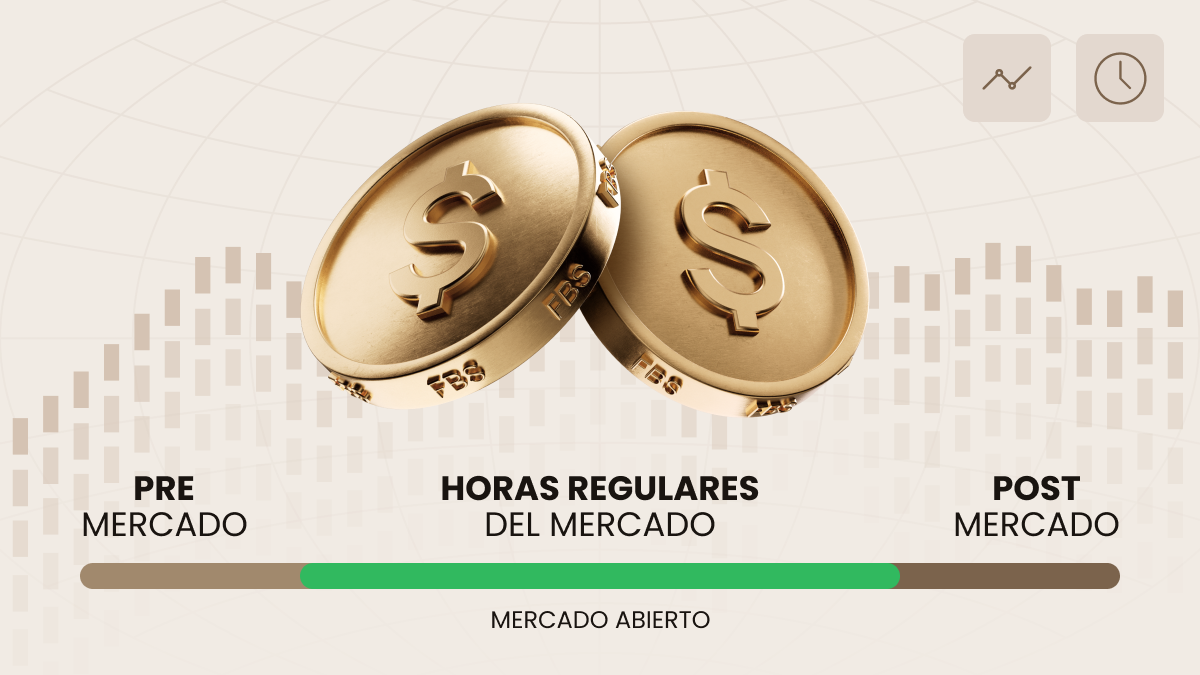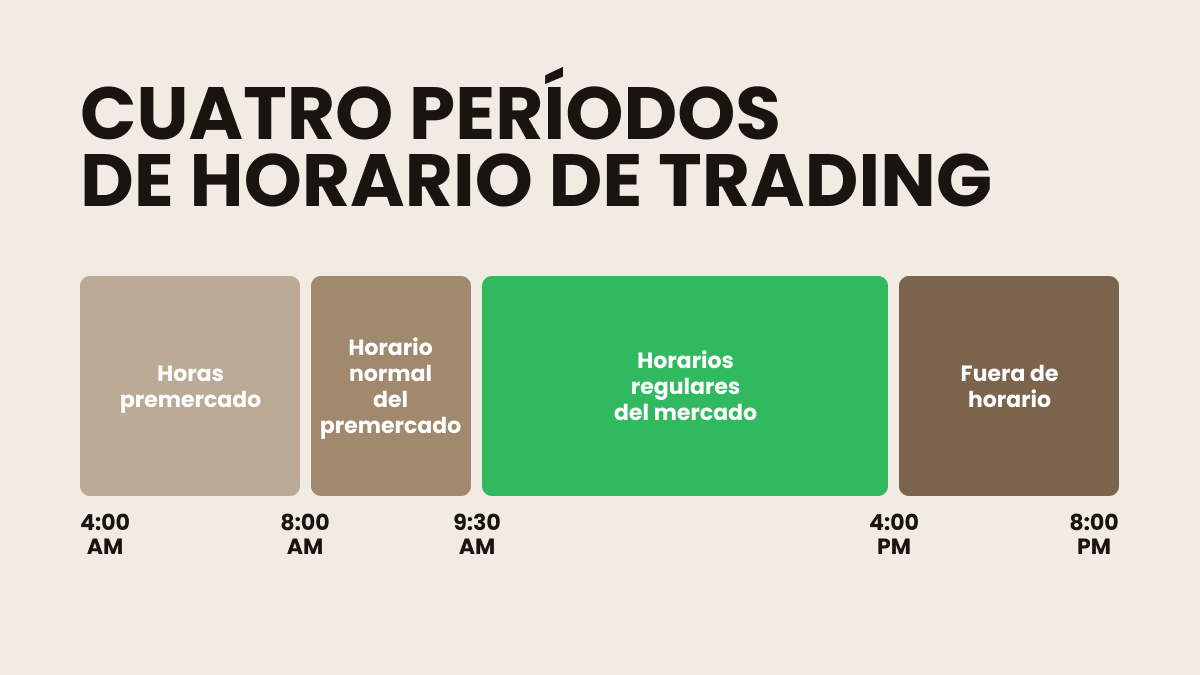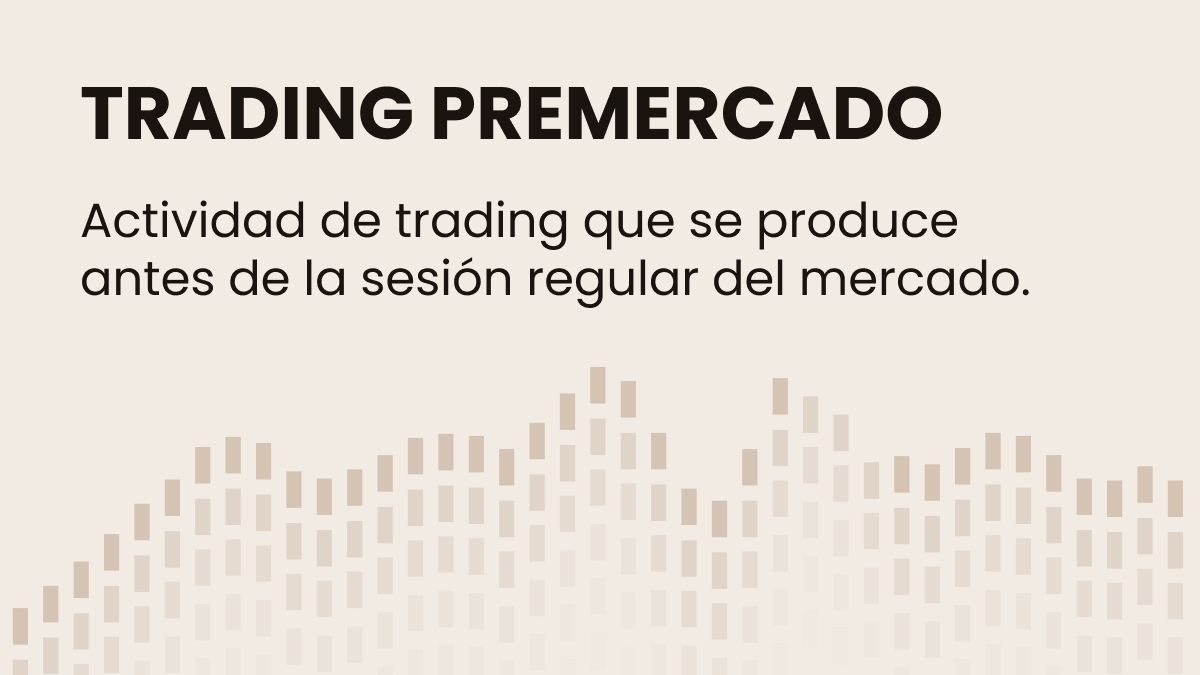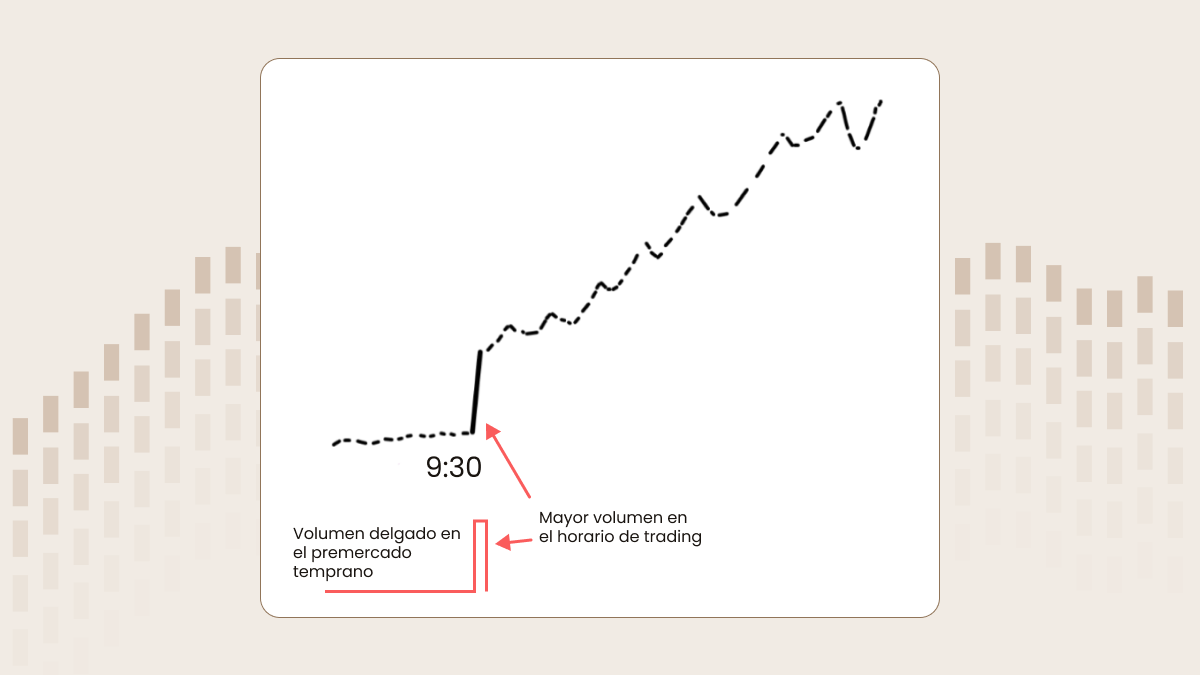
Desearía que todos los activos fueran como las criptomonedas, no porque las criptomonedas puedan aumentar un 100% al día e inmediatamente después de eso caer hasta la mitad del crecimiento (aunque sigue siendo divertido). Desafortunadamente, la única gran cosa que los activos ordinarios no tienen es el trading 24/7. La mayoría de los instrumentos en Forex están disponibles para operar 24/7, pero ¿qué pasa con las acciones? ¿Están disponibles solo varias horas al día? Bueno, sí y no, pero sobre todo no. En este artículo, aprenderás sobre el trading pre-mercado y trading after hours:
- ¿De qué se tratan?
- ¿Quién puede hacer uso de eso?
- ¿Es mejor de alguna manera que el trading clásico?
- ¡Y mucho más!
¿Qué es el trading after hours?

El trading after hours se lleva a cabo después del día de trading de una bolsa de valores y te permite comprar o vender acciones fuera del horario de trading habitual. También se denomina sesión de trading extendida.
Los mercados pre- y after hours funcionan de la misma manera que el mercado regular, en el sentido de que las acciones se operan entre las partes a un precio acordado. En otras palabras, el precio que recibirás es el precio que alguien en el mercado after hours o pre-mercado está dispuesto a pagar.
El trading after hours permite a los inversores reaccionar ante las publicaciones de ganancias de las empresas y otras noticias que normalmente ocurren antes o después del horario de trading habitual. Por ejemplo, los precios pueden oscilar violentamente en una publicación de ganancias o noticias de que algún CEO va a dimitir. Así que si deseas comprar o vender lo antes posible en función de las noticias, deberás colocar una orden de trading after hours.
Horario de trading after hours

Hay un par de sesiones de trading extendidas:
- El pre-mercado opera de 04:00 a 09:30 ET.
- El mercado regular opera de 09:30 a 16:00 ET.
- El mercado after hours opera de 16:00 a 20:00 ET.
No todos los brokers brindan acceso al trading pre-mercado y after hours. Y no todos los brokers permiten operar todas las horas pre-mercado y after hours. Por ejemplo, algunos brokers te dan la oportunidad de operar solamente una hora antes de que abra el mercado y una hora después de que cierre. Los términos son diferentes y dependen de las regulaciones (y de la disposición de los brokers de hacer lo que quieran).
¿Quién puede operar en horario extendido?
El trading after hours comenzó aproximadamente en 1999. En ese momento, la mayoría de las bolsas de valores introdujeron redes de comunicación electrónica (ECNs – un tipo de foro o red computarizada que facilita el trading de productos financieros fuera de las bolsas de valores tradicionales). Con una ECN, los traders e inversores tienen poca necesidad de colocar órdenes personalmente en el edificio de una bolsa de valores.
Hoy en día, la mayoría de los participantes del mercado usan sesiones de trading extendidas para reaccionar a las noticias más rápido que otros. Ejemplos de tales noticias son:
- Reportes de ganancias.
- Cambio de calificación (por lo general, los principales bancos y agencias de calificación revelan sus estimaciones antes de que abra el mercado).
- Eventos repentinos.
Lo que podemos decir con seguridad es que el trading pre-mercado y after hours está disponible únicamente para los traders de acciones y solo con ciertos brokers. Los brokers de CFDs ofrecen esta opción con menos frecuencia debido a las regulaciones y a las medidas de seguridad.
En cuanto a los participantes más grandes, una sesión extendida es el momento perfecto para que el dinero inteligente actúe. Por ejemplo, las personas con información privilegiada y los fondos de cobertura a menudo utilizan horarios pre-mercado y after hours para cumplir con sus órdenes a través de los llamados 'dark pools' (un intercambio organizado de forma privada para negociar valores). Los dark pools permiten a los inversionistas institucionales operar sin exposición hasta después de que la operación haya sido ejecutada y reportada.
Riesgos del trading after hours

Dado que hay menos participantes que durante el horario regular de trading, los mercados pre- y after hours generalmente tendrán menos liquidez, mayor volatilidad y menor volumen. Esto puede afectar sustancialmente el precio que un comprador o vendedor termina recibiendo por sus acciones, por lo tanto, es aconsejable utilizar una orden Limit en cualquier acción comprada o vendida fuera del horario de trading habitual.
Sería útil si también consideraras el riesgo de la fijación de precios. Diferentes instituciones financieras utilizan múltiples ECNs para ejecutar sus operaciones. Tu orden se ejecuta con el mejor precio disponible de múltiples fuentes durante una sesión de trading regular. Pero en una sesión extendida, estás limitado por un solo broker. Por lo tanto, el precio podría ser peor que con otras fuentes. Sin embargo, tales spreads entre brokers podrían convertirse en una oportunidad de trading de arbitraje. Pero hablaremos sobre eso más adelante.
Por supuesto, el trading after hours involucra a menos participantes del mercado. Por ende, se colocan menos órdenes en la tabla de profundidad de mercado. Cuando todos están tratando de reaccionar a una noticia a la vez, la acción se negociará de forma salvaje en la sesión after hours mientras el mercado trabaja para digerir las noticias y descubrir un nuevo precio para el valor. Como resultado, puede resultar más difícil para los inversores minoristas ejecutar una orden al precio elegido. Además, es posible que puedas obtener un mejor precio en la sesión de trading regular del día siguiente.
Beneficios del trading after hours
En primer lugar, las sesiones extendidas te ofrecen posibilidades de operar con las noticias antes que los demás. Adquisiciones, fusiones, declaraciones de quiebra, informes gubernamentales sobre desempleo y otros eventos pueden mover las acciones antes (o después) de la campana de apertura. Entonces, solo necesitas reaccionar rápidamente para capturar el movimiento.
Y además, no olvides el arbitraje. Es un estilo de trading que incluye la búsqueda de una divergencia en los precios del mismo activo en diferentes brokers. Por lo general, los precios tienden a alinearse (porque es el mismo activo, ¿por qué debería divergir?). A los traders de arbitraje les encantan las sesiones extendidas porque es el único momento en el mercado de valores donde el arbitraje puede existir por más de una fracción de segundo.
En resumen, el trading pre-mercado y after hours tienen sus pros y sus contras. Con la comprensión de las sesiones extendidas y cómo usarlas, puedes encontrar nuevas oportunidades de trading. Pero cuidado con los riesgos. Opera con seguridad, ¡buena suerte!